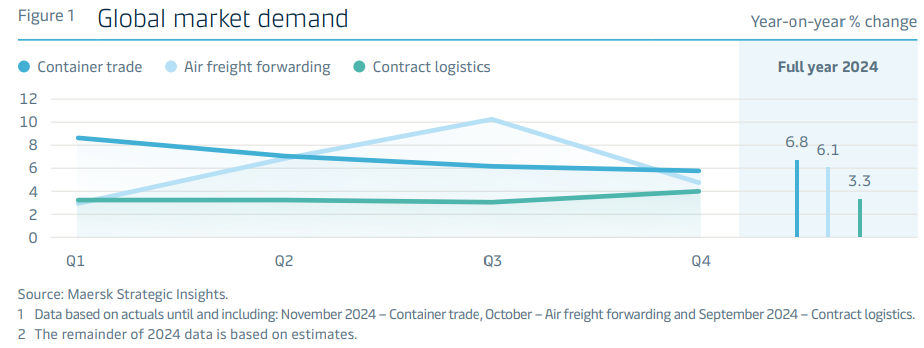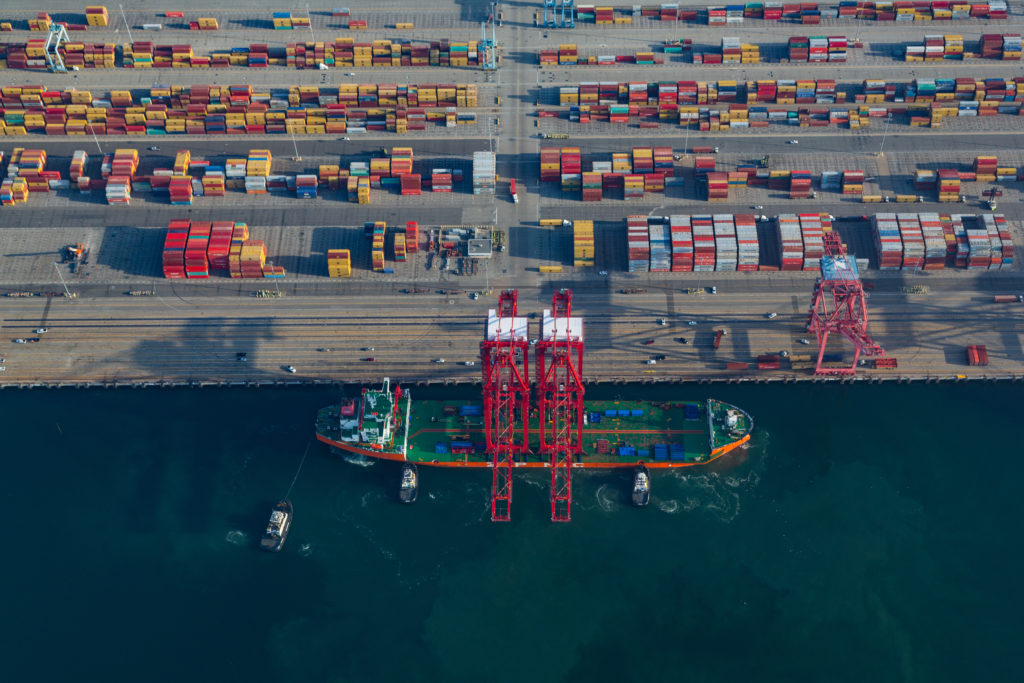The world container market recorded a year-on-year growth of 6.8% in 2024, according to estimates by shipping company Maersk.
With that, this market had a recovery: total container shipping demand increased by only 0.3% in 2023, reversing a 3.7% decline in 2022.
World container market
The results were better than expected. In early 2024, maritime services provider Clarkson Research projected that container shipping demand would increase 3.8% in 2024, at an annual rate.
The world container market operates through a global network of between 6,000 and 7,000 ports, although a few hundred are of significant importance on a global scale.

What materials are containers made of? Mainly of corrosion-resistant Corten steel, although some are also made of aluminum. Their floor is usually made of treated plywood or bamboo, materials that offer resistance to rain, wind and other adverse conditions and provide stability for the cargo.
In international trade, these large metal boxes are used to carry goods from one country to another on giant ships. And an important fact in this is that the top 10 shipping lines control more than 80% of the world market.
Among the world’s largest shipping lines are: MSC, Maersk, CMA CGM, COSCO Group, Hapag-Lloyd, ONE, Evergreen Line, HMM, Yang Ming Marine Transport Corp. and Zim.
The shipping lines move through trade routes, such as the English Channel, the Strait of Malacca, the Suez Canal and the Panama Canal, for example.
Regional trade
According to Maersk, in the global container market in 2024, estimated import volumes were particularly strong in North America (14 percent) and Latin America (12 percent).
Imports from the Far East showed a weak performance, with only 1 percent growth. In contrast, imports into Africa recorded a 1 percent drop.
On the other hand, all vertical sectors experienced solid growth. The most prominent were Technology, Retail and Lifestyle.
In 2024, export growth from China drove global trade expansion. Throughout the year, China strengthened its presence in almost all regions, with the exception of North America.
In addition, China’s share of global exports rose from 32% in 2019 to 34% in 2023. It is estimated to reach 36% in 2024.
Maersk said this increase is due to overcapacity in the Chinese manufacturing industry. As a result, export prices dropped in 2023 and 2024, which improved the competitiveness of Chinese products in the global market.

